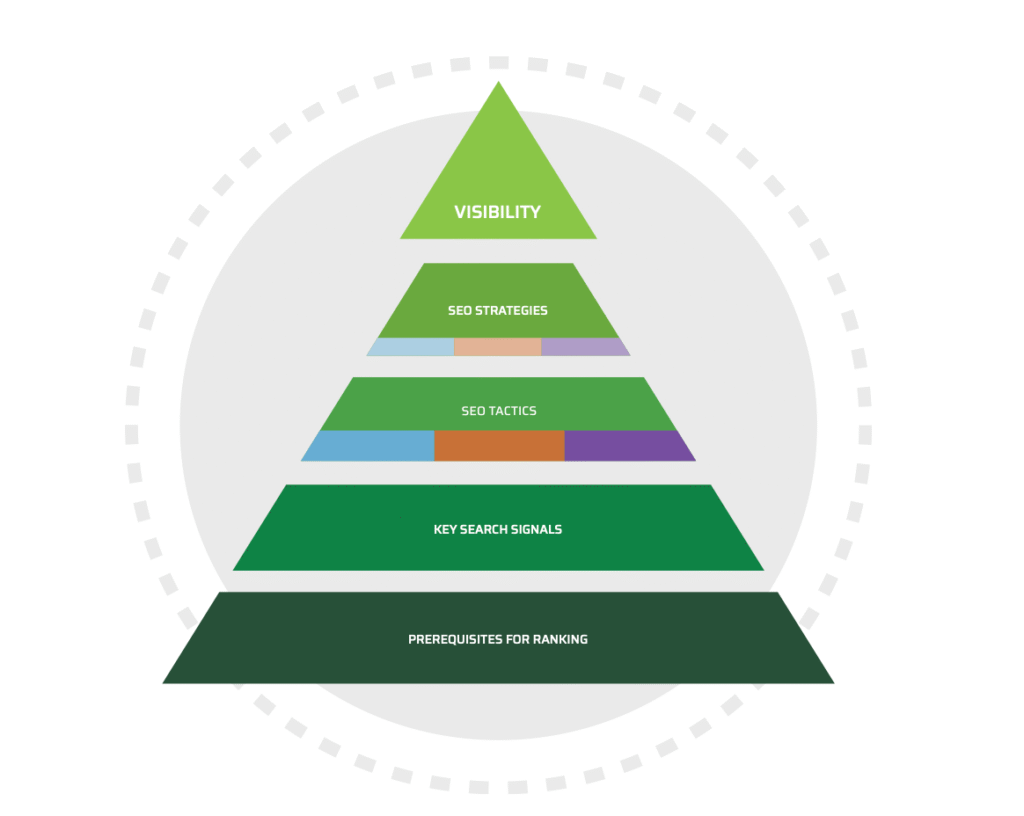
When trying to find good SEO keywords people typically try chasing high keyword search volumes. This can create ranking SEO success by creating a lot of traffic and visibility for your business but may not be converting a lot of sales.
The “Volume Only” approach could be costing your company without bringing in real results. It’s the silent killer of marketing budgets.
The goal of modern search engine optimization is to redefine your entire keyword strategy. By choosing broad SEO keywords with high keyword search volumes you could be battling larger companies with a high budget making it very costly. These generic terms drive volume but rarely sales. Instead, companies should shift their focus to search intent. Learning how to find quality long tail keywords through keyword research, businesses can bypass intense keyword competition and connect directly with the customer who is ready to buy right now. This strategic shift is essential for achieving effective ranking SEO.
This comprehensive guide will show you how to identify what SEO keywords to avoid and precisely what to target using keyword research tools. We’ll show you how to find the right keywords and implement a quality keyword strategy.
The Flaw in Volume: Why Your Traffic is a “Silent Killer”
For a long time the approach to SEO keyword strategy has been to find higher keyword search volumes and that will bring better results. This can ignore a crucial element: why the user is performing the search query.
A user searching for an answer is nowhere near as valuable as a user searching for a quote. When you prioritize volume it can bring in a lot of traffic with low commercial intent. The high traffic can look good on reports but can lower your lead quality and conversion rate. This is where a lot of companies misapply keyword metrics.
Consider the difference for a local landscaping company. A generic SEO keyword like “how to plant a tree” has massive volume but represents an informational keyword. This keyword could be searched by users looking to DIY. Instead, a specific keyword like “commercial sprinkler repair quote Orem” has low volume but is purely a transactional keyword. Which user do you think is going to sign a contract?
When your site ranks high for too many of these broad, generic keywords, your keyword search volumes soar, but your conversion rate plummets. This is the volume trap that leads to frustrated business owners questioning their entire seo strategy.
The Cost of Ignoring Search Intent
Ignoring search intent means you are constantly engaged in an unwinnable battle for popular keywords. You are fighting national brands that have unlimited budgets to compete in Google Ads and top the search engine results page. Furthermore, poor targeting leads to a low-quality score, which makes any future Google Ads you run far more expensive.
Meticulous keyword research must be the bedrock of any successful digital strategy. It requires leveraging every available keyword research tool such as Google Suggest and Google Trends to accurately identify the difference between a low-value keyword idea and the precise keyword phrase that ready buyers use. The ultimate goal of this deep analysis is to find relevant keyword opportunities that consistently lead to high keyword ranking and excellent conversions.
The Solution: Leveraging Long Tail Keywords Through Strategic Keyword Research
Using long tail keywords is a simple way to avoid the volume trap. These are highly specific, four-or-more-word phrases that instantly reveal the user’s intent to commit time, money, or effort. By focusing on the correct search intent within your keyword strategy, you radically increase your odds of conversion and dramatically improve your overall ranking SEO.
The 4 Types of Search Intent and Where the Money Is
In your keyword research you can classify every SEO keyword into one of four categories. This can help you understand what keywords will work best for your purpose and bypass unnecessary keyword competition. In this case companies who want to drive sales want to focus on commercial and transactional types.
- Informational Intent: The user’s goal is to learn or know. Keywords are often question-based: “what is a good website design.” These are great for content marketing but terrible for immediate sales.
- Navigational Intent: The user’s goal is to find a specific website or location. Keywords are usually branded: “Greenhouse UVU services.” This is a great way to monitor branded keywords versus non branded keywords.
- Commercial Investigation Intent: The user’s goal is to Research and Compare options. Keywords often include terms like “best,” “review,” “comparison,” or “pricing.” These are high-value relevant keywords that show the user is close to committing.
- Transactional Intent (Highest Intent): The user’s goal is to Buy, Book, or Commit NOW. Keywords include powerful action words like “quote,” “hire,” “buy,” or “consultation.” These are the ultimate transactional keywords and the focus of our refined keyword research process.
Using keyword research tools allows us to filter out the noise of high-volume informational keywords and focus entirely on finding these specific keyword phrases.
How Long Tail Keywords Beat Keyword Competition
The specificity of long tail keywords is what allows you to overcome big-name keyword competition and achieve sustainable ranking SEO.
- Lower Competition and Higher Relevance: A national company will bid heavily on the generic SEO keyword “website design.” They rarely compete for the precise long tail keyword “custom website development for small manufacturing business Lehi.” By targeting the latter, your pages rank faster because the search engine sees a perfect match between the user’s search query and your solution.
- Superior Conversion Match: The content written for a long tail keyword naturally satisfies the user’s need instantly. If the user searches for “custom WordPress developer quote,” your page gives them a quote form, satisfying their Transactional Intent immediately. This leads to higher conversions than a page optimized for a vague keyword phrase.
- Finding the Keyword Gap: Companies can use specialized keyword tools to perform a keyword gap analysis, identifying keyword opportunities that your competitors have completely overlooked. This focused approach on relevant keywords is the secret to winning local search battles.
Your Action Plan: Three Steps to Conversion-Focused SEO

Implementing a refined keyword strategy requires work and the right keyword research, but the results will directly impact your bottom line. By moving past the idea of simple keyword research you can optimize both cost and results.
1. Audit Your Current Keywords by Intent
Stop analyzing your SEO keywords solely by keyword search volumes. The first step in a strategic pivot is to use a tool like Google Analytics to map your top performing keywords and classify each one by Search Intent.
- The Intent Check: If your highest traffic pages are dominated by informational keywords, you have a traffic problem, not a sales pipeline. This signals a need to pivot that content immediately to target more commercial and transactional keywords.
- The Audit Action: Businesses should conduct a thorough SEO audit specifically focused on search intent, delivering a detailed report of the low-value generic keywords that must be abandoned in favor of the right keyword variations that lead to sales.
2. Build Content Based on Keyword Ideas and Suggestions
Writing without a purpose and hoping to rank can be a failing strategy. Every piece must start with quality keyword research.
- The Process: Powerful keyword research tools should be used to generate hundreds of keyword ideas and keyword suggestions related to your core services. This process involves looking for keyword variations and related keywords to ensure comprehensive coverage of the topic.
- Pillar and Cluster: This strategy uses your broad, high-volume terms (e.g., “SEO Keywords”) as the informational “pillar” page. In contrast, your long tail keywords become the conversion-focused “cluster” pages that link back to the pillar and actively drive leads.
3. Use Your Local Insight to Beat Competition
Your position as a local business is your greatest defense against national keyword competition. Use it to your advantage:
- Hyper-Local Focus: By including city names and local service terms in your keyword research, you cut through the noise. This authentic, hyper-local connection is what converts a browser into a client and significantly improves your local keyword ranking.
- Non-Branded Opportunities: We focus on non-branded keywords to capture customers who haven’t heard of you yet but are ready to purchase the service you offer.
Build A Better SEO Strategy With Our SEO E-Book
Mastering search intent is the key to unlocking true revenue growth and dominating your keyword competition. Our E-book provides crucial insights on winning SEO keyword strategies that can take your company to the next level.
Download your E-book here:
https://fertilizer.thegreenhouseuvu.com/seo_ebook
FAQs
1. If I use long tail keywords, will my keyword search volumes drop?
Answer: Yes, your raw traffic volume may decrease, but your conversion rate will significantly increase. You are swapping 1,000 low-intent clicks for 50 high-intent clicks that lead to 10 sales leads. This is a massive net gain for your business.
2. How do you find long tail keywords that my competitors aren’t seeing?
Answer: We move beyond standard keyword tools. We find these low keyword competition phrases by analyzing customer reviews, using advanced seo keyword research techniques, and leveraging Google Suggest and Google Trends to uncover keyword ideas and user language.
3. Is optimizing for long tail keywords the same as better ranking SEO?
Answer: Yes. When a page perfectly matches the user’s search query, the user stays on the page longer and is more likely to convert. This behavior signals quality and relevance to the search engine, leading to better authority and improved ranking SEO over time.


